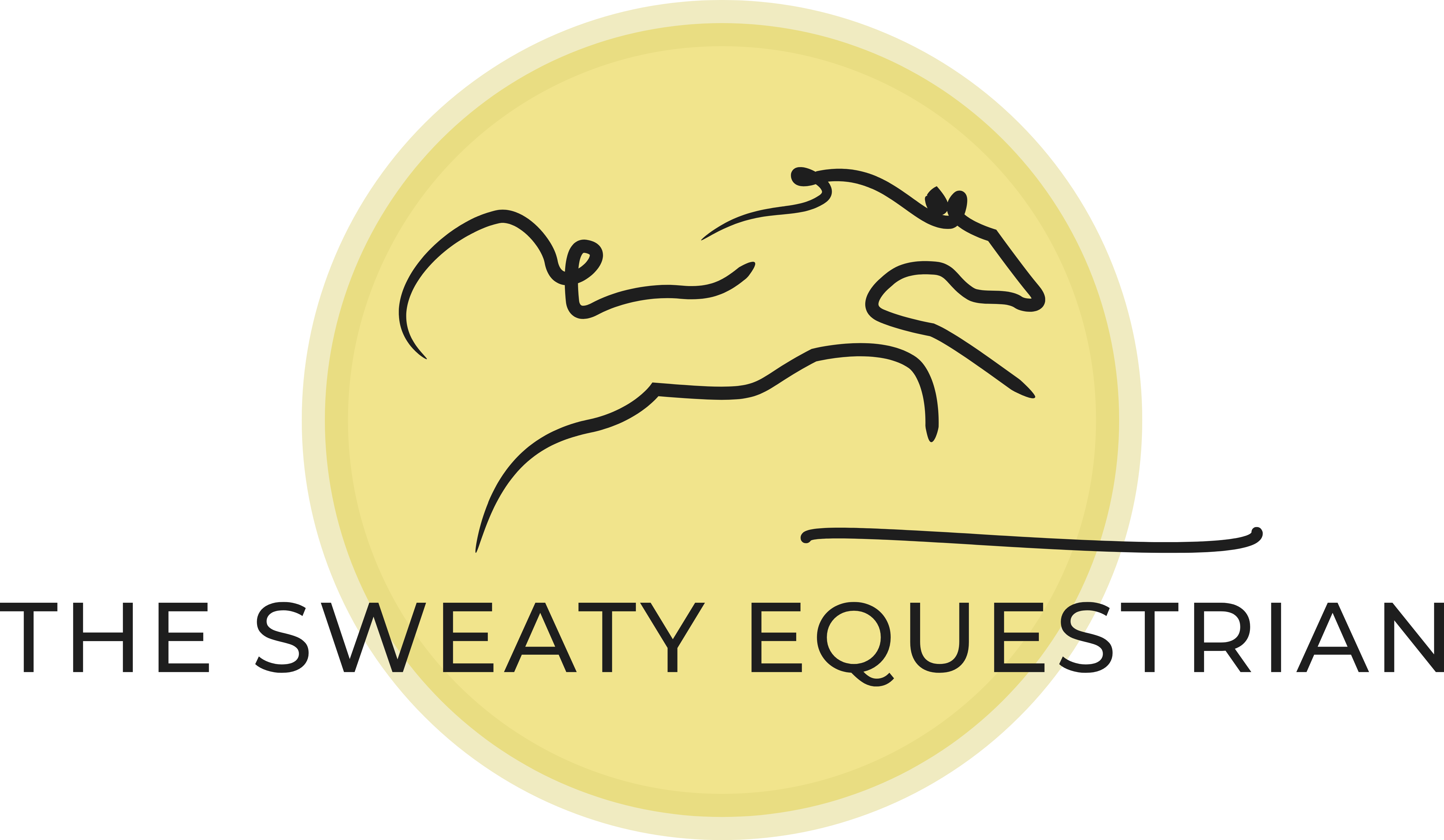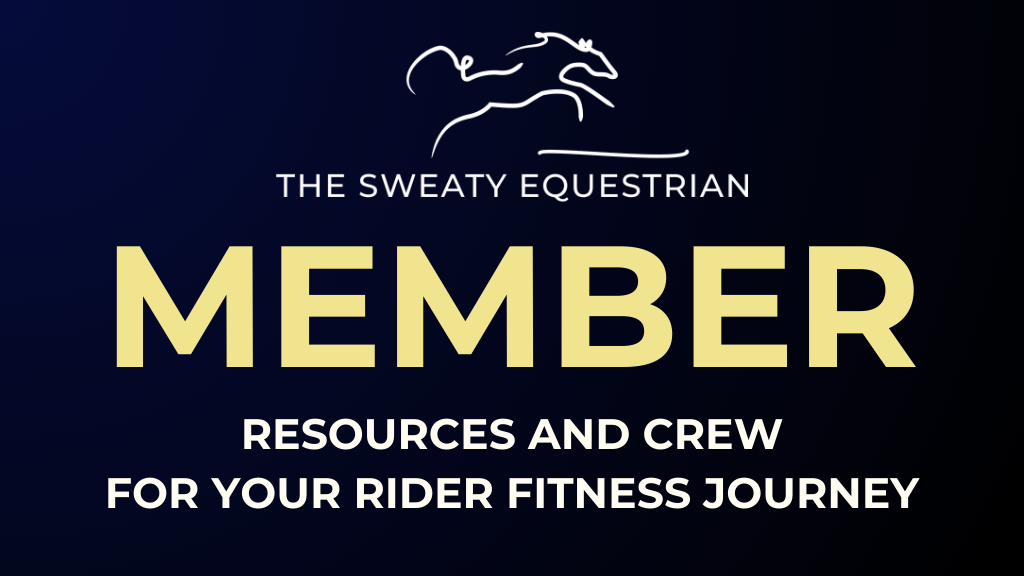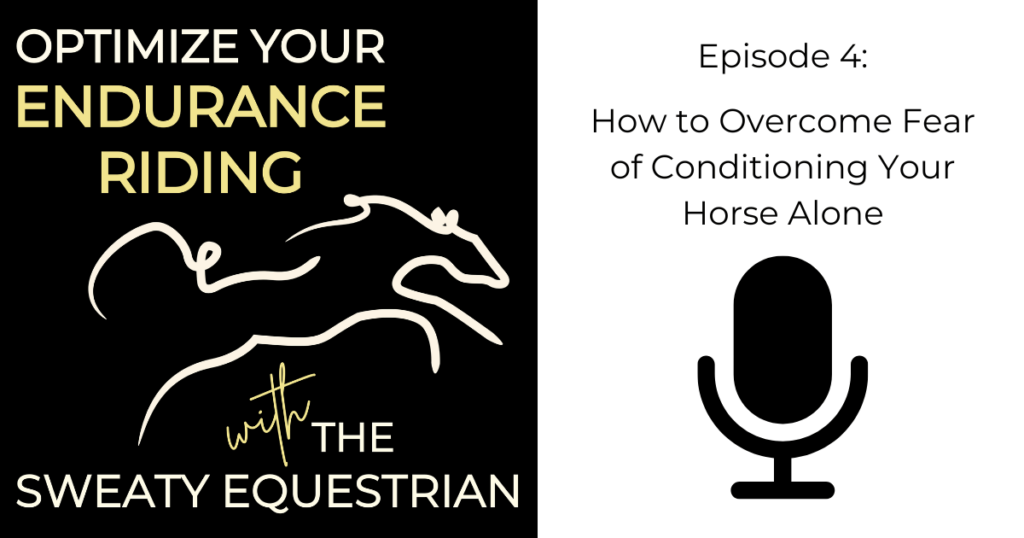Raise your hand if you remember doubling over on the middle school track, clutching your side and mouthing “stitch” at your gym teacher.
Yeah, me too.
As much as we all wish this could be nothing but an amusing memory, the truth is that over 60% of equestrians report experiencing side stitches in the saddle. (1)
Side stitches are particularly inconvenient for endurance riders. Who has time to lurch around on the side of the trail until that jabbing pain subsides? Whose horse eases up on the pogo trot just because mom is gasping and wincing up there?
Fortunately, while this physiological phenomenon is not fully understood, there are some well established methods of keeping side stitches from cramping your style on the endurance trail.
What is a Side Stitch?
You know the feeling: Side stitches – more formally dubbed exercise-related transient abdominal pain (ETAP) – typically present as sharp or stabbing pain just below your ribcage, usually off to one side. Some riders also experience pain at the tip of the shoulder on the same side.
While short-lived and ultimately benign, side stitches can significantly impact your riding performance and enjoyment.
Why Horse Riders Get Side Stitches
Researchers have several theories about what causes side stitches:
Diaphragmatic Ischemia: As a kid, you may have been told that side stitches result from decreased blood flow to the diaphragm, which is the muscle that expands your lungs as you inhale. Several studies have since led researchers away from this theory, but some still believe it explains why consuming fuels that pull bloodflow to the stomach – and away from the diaphragm – make side stitches more likely.
The Bouncing Effect: Unlike cyclists, who experience side stitches at roughly half the rate of equestrians (1), horse riders deal with vertical jostling that may pull on the ligaments and membranes that connect our muscles, bones, and abdominal organs. It’s theorized that all this tugging creates irritation and pain.
Strangely, swimmers – who presumably don’t bounce much – report higher incidence of side stitches than either equestrians or runners! Go figure.
Food and Drink Choices: What, when, and how much you eat before and during your ride can exacerbate side stitches. While large quantities of food consumed before mounting up may contribute to the bouncing effect, there seems to be more to it than just a sloshing stomach. A 2004 study found that, in athletes with a history of side stitches, sugary beverages were significantly more likely to result in side stitches than non-sugary fluids (2).
Spinal Stress: The repetitive jostling that can accompany riding puts stress on our spines, where physicians can recreate side stitch pain in some athletes by manually pressing on certain vertebrae (3). Interestingly, nerves that run to both the diaphragm and tip of the shoulder both originate from the same vertebrae, which likely explains why some side stitches are accompanied by shoulder pain.
The spinal connection is particularly relevant in riders who have kyphosis, a common condition in which the thoracic spine is more curved than normal. Fortunately, kyphosis is often reversible. Check out Help, I’m Slouchy in My Ride Photos for more about kyphosis in endurance riders.
How to Get Relief from Side Stitches in the Saddle
Next time you develop a side stitch while riding, try these strategies to send it packing:
Breathe in Reverse: As you inhale, contract your abdomen (the opposite of what naturally happens). As you exhale, allow your abdomen to expand. This takes practice, but once you get the hang of it, make those breaths deep and forceful. This reverse breathing pattern helps reset diaphragm function and relieve tension in the affected area, and it can provide surprisingly speedy relief.
Lean Forward: Carefully lean forward in the saddle while contracting your abdominal muscles. This position may reduce tention on the ligaments connecting to your diaphragm and change the angle of stress on your spine.
Apply Pressure: Using one hand to apply gentle pressure to the affected area can help release muscle tension and relieve side stitch pain.
How Equestrians Can Prevent Side Stitches
The only thing better than relieving a side stitch quickly is avoiding it in the first place. If you’re a rider prone to side stitches, give these preventative tactics a try:
Mindful Meal Timing: Allow 2-3 hours between substantial meals and saddling up. This appears to help because a full stomach puts pressure on your diaphragm and nearby ligaments. It also requires increased blood flow to the stomach, potentially reducing blood flow to the diaphragm during exercise.
This can be tricky for endurance riders because the nature of our sport demands that we consume sufficient fuel both before and during rides. My solution is to rely on calorie-dense foods that provide plenty of energy but little bulk. For details, check out What to Eat on an Endurance Ride.
Smart Hydration: Avoid high-sugar drinks, including fruit juices, before and during rides. Stick to water and non-sugary electrolyte sources instead. (My favorite is LMNT, a superhydrator that provides plenty of electrolytes without any sugar.)
Keep a Log: Everyone is different, so take notes to help you figure out which foods and beverages are likely to trigger side stitches in your case. Jot down other conditions as well (like your horse’s behavior, your own level of fatigue, etc.) that could be relevant. Finding patterns will help you avoid side stitches in the future.
Improve Your Posture: Work on your riding posture, particularly to reduce kyphosis in your thoracic (mid-back) spine. One way to do this is by regularly stretching your chest muscles and strengthening your lower trapezius muscles. Over time, this can pull your spine back into optimal posture, not only reducing your susceptibility to side stitches, but improving your riding overall.
I’ve developed a 10-minute routine to help endurance riders address the two, most common postural problems that impact their riding. One of them is kyphosis! Fill out the form below and I’ll send you the routine for free.
Strengthen Your Core: Regular core-strengthening exercises improve spinal stability and may reduce the incidence of side stitches. This is because stronger core muscles better support your internal organs and spine during bouncy activities like riding, reducing the ligament and membrane stress that may cause stitches.
Improve Overall Fitness: Studies repeatedly demonstrate that the frequency of side stitches decreases significantly with overall fitness.
Riders can improve their cardiovascular fitness with 30 minutes of aerobic exercises 3-4 times per week, conditioning the diaphragm and improving oxygen delivery during exertion.
Targeted strength training of the transverses abdominis, or TVA, and oblique muscles creates a more stable platform for the diaphragm during riding. Learn more in my article Meet Your TVA.
Mobility exercises focused on the mid-back, or thoracic region, reduce spinal stress during equestrian sport.
Consistent workouts and progressive adaptation – that is, regular exercise that gradually increases in intensity – has been demonstrated to lead to fewer side stitches than sporadic exercise. This suggests that consistent training creates physiological adaptations that protect against side stitches.
Side stitches may have followed you all the way from 7th grade PE to the endurance trail, but targeted modifications to your fueling strategy and a solid fitness practice can help you shake them for good. Happy riding!
You might also like
This post includes affiliate links, and I may earn a small commission (at no extra cost to you) when you purchase through these links. I only recommend products and services I think are helpful and useful. Thanks for helping me offset the cost of maintaining this blog as a free resource!




